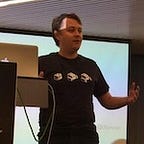A Simple But Powerful Caching Algorithm: Presenting the Active-Victim-Cache
Discover an easy-to-implement caching strategy that optimizes speed without the complexity of traditional methods.
Caches can drastically speed up program execution by storing frequently accessed data, but they also face a critical challenge: deciding what data to evict when memory is full. In this article, we unveil a simple yet powerful caching algorithm that simplifies implementation and enhances performance, all without the headaches of more complex solutions.
In programming, caches are used to speed up program execution and are employed for two primary purposes:
- Storing loaded data to avoid reloading it, and
- Storing the results of complex calculations to avoid repeating them.
However, there’s a drawback: memory is finite, and not everything can fit in the cache. Eventually, the cache must start evicting data to make room for new entries. This brings us to one of the most critical questions: when the cache is full, what should be evicted?
Answering this question has led to the creation of numerous algorithms. Some of the classic ones are First-In-First-Out (FIFO), Least Frequently Used (LFU), and two…
